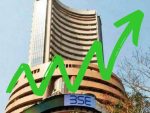
India’s real GDP growth in FY20 to come slightly below 5%: IHS Markit
PTI, Dec 9, 2019, 10:05 AM IST

New Delhi: India’s real GDP growth in 2019-20 fiscal is expected to be slightly below 5 percent as the impact of stimulus measures will take time to filter through to the economy, IHS Markit has said.
The latest GDP data for the July-September quarter showed a significant further moderation in the pace of economic growth to 4.5 percent, the weakest in six years with a key contributory factor being a slump in manufacturing output. This compared with the 5 percent growth rate registered in the previous quarter and 7 percent rate recorded a year ago in the September quarter of 2018.
For the first half of 2019-20 fiscal, GDP growth slowed to a pace of 4.8 percent compared to the 7.5 percent a year back.
“Financial sector fragilities continue to weigh on India’s economic growth momentum, with the high level of non-performing loans on the balance sheets of the public sector banks, constraining their new lending,” IHS said in a report.
Furthermore, there are also risks from potential contagion effects from troubled non-bank financial companies (NBFCs) to the balance sheets of some commercial banks, which could further weigh on the overall pace of credit expansion.
In response to the growth slowdown, the Reserve Bank of India (RBI) has eased policy rates significantly during 2019, with a series of rate cuts since February, while the government announced a large reduction in corporate tax rates in September to help boost new investment spending.
“Following the weak GDP outturn for the September quarter, Indian real GDP growth in FY 2019-20 is expected to be slightly below 5 percent, as it is anticipated that the impact of stimulus measures will take time to filter through to the real economy,” IHS said.
The RBI also lowered its GDP growth forecast for 2019-20 from 6.1 percent to 5 percent on December 5.
“Confronted with the sharp slowdown in economic growth momentum, the Indian government will face increasing pressure to roll out additional fiscal measures to bolster manufacturing output and kick-start an upturn in the investment cycle. Such measures could include accelerated government spending on infrastructure projects such as roads, railways, and ports, as well as urban infrastructures such as affordable housing and hospitals,” it said.
IHS said given that the process of strengthening bank balance sheets has been slow, taking a number of years already, India’s financial sector problems are likely to remain a drag on the pace of economic growth over the medium-term outlook.
“Furthermore, any turnaround in the investment cycle could also be relatively protracted, depending on the ability of the government to accelerate its own infrastructure spending program,” it said.
IHS said the weakest sector has been auto manufacturing, with output down by 24.8 percent in September. “The Indian auto sector has slumped into a crisis, with hundreds of thousands of auto sector workers in the production and distribution segments having been laid off over the past 12 months”.
A key concern is also the sharp contraction in capital goods output, which was down 20.7 percent in September 2019.
“This indicates that India’s investment cycle is experiencing a severe cyclical slowdown, as reflected in the further slowing of fixed investment growth during the September quarter,” it said. “The construction sector growth also slowed to a pace of 3.3 percent in the September quarter, compared with growth of 5.7 percent in the June quarter”.
Measuring GDP from the expenditure side, an important factor supporting the growth was public consumption, which rose by 15.6 percent in the September quarter. Private consumption growth also picked up modestly versus the previous quarter, although it continues to expand at a much slower pace than in the past two financial years, IHS said.
“Although the RBI has also provided monetary policy stimulus through its monetary policy easing measures, the impact is likely to be more protracted, since monetary policy stimulus effects on the real economy generally act with long legs. Furthermore, the impaired balance sheets of many public sector banks and NBFCs also will dilute the flow-through of monetary policy easing to the economy,” it added.
Udayavani is now on Telegram. Click here to join our channel and stay updated with the latest news.
Top News
Related Articles More

Stock markets stage strong rebound after 4 days of slump, Sensex rallies 599 pts

PHF Leasing Limited raises $10 Mn through a mix of equity and debt

CCPA asks FSSAI to probe claim of Nestle adding sugar to baby products

Markets tank in early trade as Middle East tensions flare-up

Tesla shares tumble below $150 per share, giving up all gains made over the past year
MUST WATCH
Latest Additions

Injuries don’t define you: Mohammed Shami shares rehab update

Shivakumar desperately wants to become CM, says K’taka BJP chief Vijayendra

Scribe throws lapel microphone towards Sharad Pawar in Baramati; cops give clean chit

India delivers first batch of BrahMos missiles to Philippines

Air India cancels Dubai flights due to operational disruptions

























